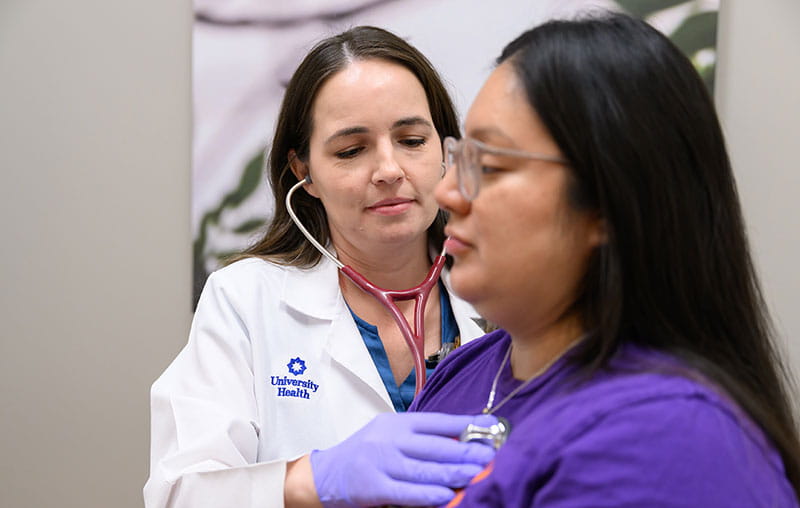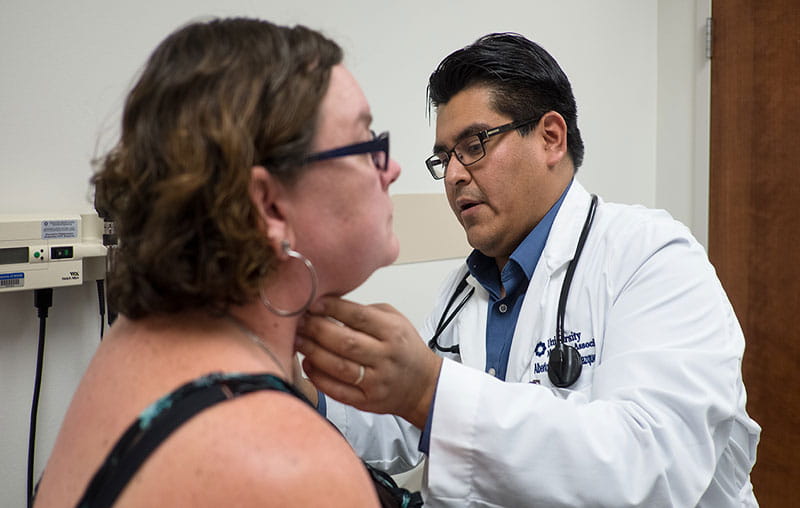What Is Nonalcoholic Fatty Liver Disease?
Nonalcoholic fatty liver disease (NAFLD) is a condition where fat builds up in the liver. Though it often affects adults, it’s becoming more common in children – about 1 in 10 children in the U.S. have NAFLD today.
There are two types of nonalcoholic fatty liver diseases that affect children:
- Nonalcoholic fatty liver (NAFL)
- Nonalcoholic steatohepatitis (NASH)
NAFL is a mild form of NAFLD that presents with abnormal blood tests or ultrasound finding in early stages of the disease. NASH presents later, is more severe and can lead to permanent liver damage such as cirrhosis. It’s important to diagnose NAFLD early to prevent long-term, permanent damage to the liver.
What Causes Nonalcoholic Fatty Liver Disease in Children?
Obesity is associated with most cases of NAFLD. Genetics and certain health conditions increase the risk of developing NAFLD. Conditions that are associated with NAFLD in children include:
- Obesity or being overweight
- Type 2 diabetes
- High blood pressure
- High cholesterol
- Metabolic syndrome
Scientists are still studying the role genes play in developing NAFLD. But according to the National Institute of Diabetes and Digestive and Kidney Diseases, genetics could explain why NAFLD is more common in certain populations.
What Are the Symptoms of NAFLD?
Often there are no signs or symptoms of NAFLD in children. Children with NASH, the more severe type that causes cirrhosis, may not even have symptoms. Potential symptoms of NAFLD may include feeling tired easily or having pain in the upper right side of the abdomen.
If you suspect your child is experiencing signs of NAFLD, contact their pediatrician for information about screening.
How to Diagnose Fatty Liver Disease
The only sure way to diagnose NAFLD is to order a liver biopsy. But before that, your child’s doctor will take several steps to determine the likelihood of NAFLD.
First, they’ll ask about your family history and perform a physical exam to look for physical signs of NAFLD. These could be an enlarged liver or spleen or dark patches of skin, which could indicate insulin resistance.
After the physical exam, your child’s doctor may order a blood test to check for increased levels of liver enzymes. If the test shows increased levels of liver enzymes, your doctor may then order an imaging test like an ultrasound to look for signs of a problem with the liver.
If your child’s doctor suspects that your child could have NAFLD, they might order the liver biopsy. A very small piece of liver tissue is sent to the lab, where a pathologist will examine it closely to determine if NAFLD is present and what may be causing it that could be treatable.
How to Treat Fatty Liver Disease
Currently there are no medications approved to treat NASH or NAFLD.
If your child is overweight, losing some of the excess weight will help reduce the amount of fat in the liver.
If your child’s NASH causes cirrhosis, their doctor can recommend a treatment plan. If the cirrhosis progresses to liver failure, a liver transplant may be necessary in very rare situation.
How to Prevent NAFLD
You can help prevent NAFLD in your child by being a good role model. The whole family can get healthier by adopting a healthy diet and increased activity plan.
- Get outside and play regularly
- Eat a healthy, balanced diet
- Avoid fast foods and sugary drinks
- Stay active
Your child’s pediatrician can help you with this. Ask about creating a healthy, nutritious diet plan for your whole family.
Can NAFLD Be Reversed?
You can reduce the amount of fat in the liver by losing weight gradually and adopting a healthier lifestyle. This can help reduce the risk of NAFLD progressing to cirrhosis and liver failure.
Pediatric Liver Care at University Health
The pediatric liver specialists at University Health are experts in NAFLD care for the children of South Texas. Visit our website for more information about pediatric liver care and pediatric transplant care.




